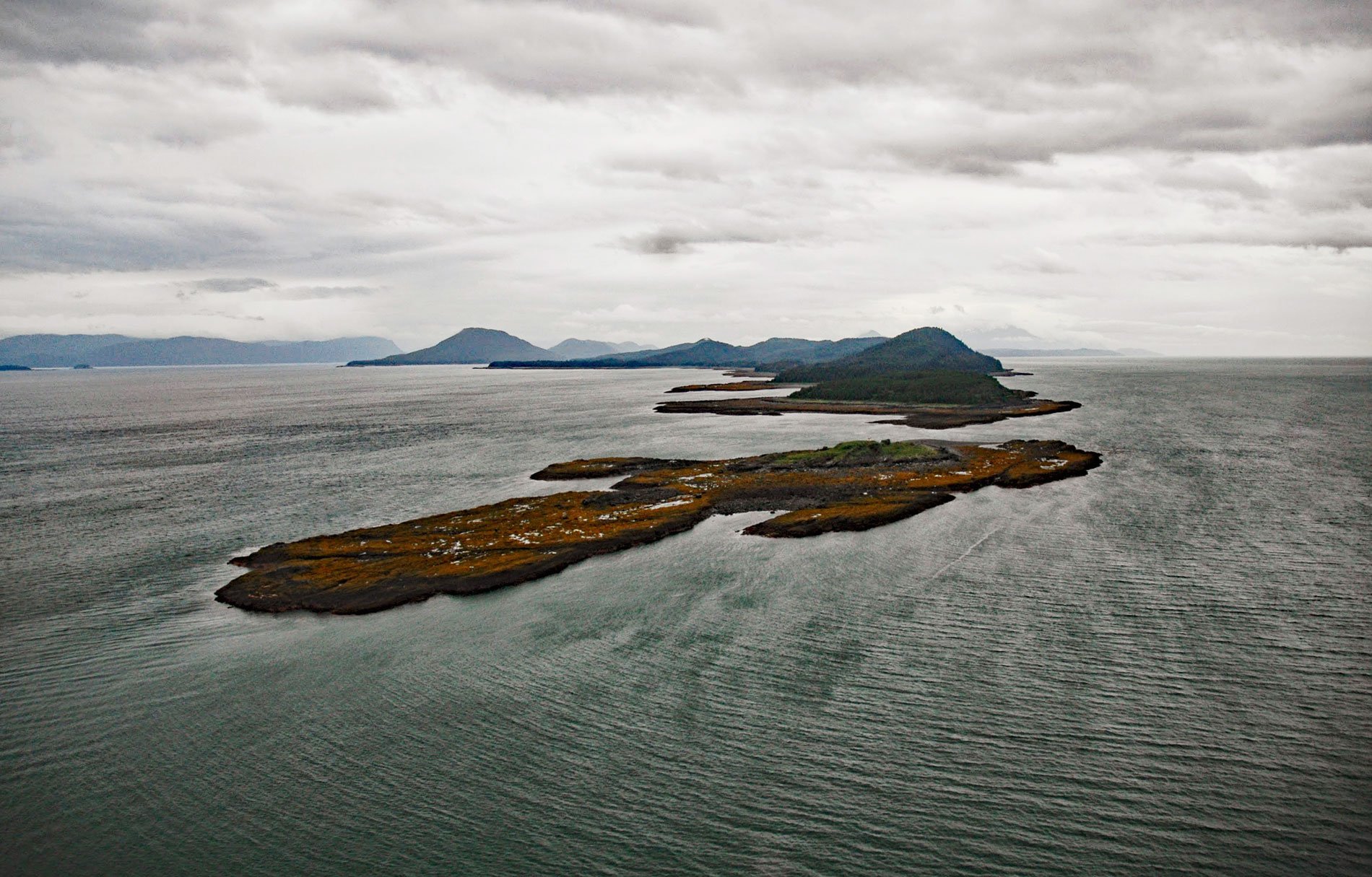Little Island is in Lynn Canal at the north end of Favorite Channel, 0.4 miles (0.6 km) north of Ralston Island, and about 67 miles (108 km) south of Skagway and 28 miles (45 km) northwest of Juneau, Alaska. The descriptive name for the island was given in 1880 by Lieutenant Frederick M. Symonds of the U.S. Navy who surveyed the area on the USS Jamestown. The name was first published by the U.S. Coast and Geodetic Survey in 1883. Only a small portion of Little Island is exposed at high tide, and the majority of the island is a wave-cut platform exposed only at very low tides. Wave-cut platforms created by erosion and are often most obvious at low tide when they become visible as extensive areas of flat rock. Lynn Canal is a passage about 63 miles (101 km long between the southern tip of the Chilkat Peninsula and Chatham Strait. Lynn Canal was explored by Lieutenant Joseph Whidbey in 1794 and named by Captain George Vancouver for his birthplace, King’s Lynn, Norfolk, England. Lynn Canal connects Skagway and Haines to Juneau and the rest of the Inside Passage to Seattle. During the Klondike Gold Rush, it was a major transportation route to the boomtown of Skagway. In 1918, the worst maritime disaster in the history of the Pacific Northwest occurred in Lynn Canal.
SS Princess Sophia departed from Skagway for Juneau, Alaska on October 23, 1918, more than three hours behind schedule. Onboard were 75 crew and about 268 passengers, including families of men serving overseas in World War I, Klondike miners, and crews of Yukon sternwheelers that had finished operations for the winter. Fifty women and children were on the passenger list. Four hours after leaving Skagway, while proceeding south in Lynn Canal, the steamship encountered heavy blinding snow driven by a strong and rising northwest wind. At 2 am on October 24, 1918, SS Princess Sophia struck and grounded hard on Vanderbilt Reef, a wave-cut platform about 4 miles (6.5 km) north-northeast of Little Island. The ship remained lodged on the reef for 40 hours and rescue attempts were delayed when another severe storm developed. The ship broke apart the following night and all 343 passengers and crew died in the incident.
In 2017, the Marine Exchange of Alaska with funding from the Alaska Ocean Observing System installed a weather station on Little Island as part of a larger effort to provide more information to mariners to aid safe voyages. The Little Island weather station transmits real-time weather information in a digital format over the Automatic Identification System and complements the National Weather Service network. The Marine Exchange of Alaska is a nonprofit maritime organization based in Juneau, established to broker information that aids safe, secure, efficient, and environmentally sound maritime operations in Alaska. In addition to expanding the system of real-time weather observations in extremely remote locations, the organization developed an extensive vessel tracking network comprised of over 140 Automatic Identification System and Marine Safety stations in Alaska. The Marine Exchange of Alaska also serves the maritime community by assisting vessels, facilities, and ports to comply with state and federal environmental, safety, and security regulations. Read more here and here. Explore more of Little Island and Lynn Canal here:

